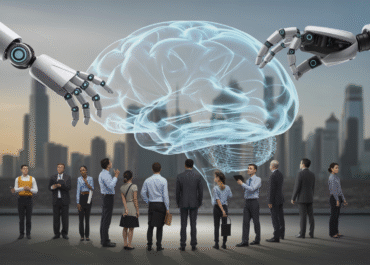Amazon Unveils DeepFleet AI Model for Robotics, Hits One Million Robots in Fulfillment Centers
In a significant stride for logistics automation, Amazon has announced the launch of DeepFleet, an advanced artificial intelligence (AI) model designed to orchestrate the movement of its vast robot army within fulfillment centers. This announcement coincides with a monumental milestone: Amazon now boasts over one million robotic drive units deployed globally across its operations.
What is DeepFleet AI? The Brain Behind the Bots
DeepFleet represents a new frontier in complex system management. As Amazon’s robot fleet grew to unprecedented numbers, the challenge of efficiently coordinating millions of discrete decisions every minute became paramount. DeepFleet leverages sophisticated AI algorithms to solve this intricate coordination problem. Instead of individual robots making decisions in isolation, DeepFleet acts as a central brain, optimizing the collective movement of hundreds or even thousands of robots within a facility.
This AI model aims to prevent congestion, optimize travel paths, and ensure a seamless flow of goods, leading to enhanced throughput and faster processing times. It’s about maximizing the efficiency of the entire system, not just individual components.
A Million Robots Strong: A Milestone in Automation
The deployment of over one million robotic drive units underscores Amazon’s relentless pursuit of automation and efficiency. These robots perform a variety of tasks, from moving inventory shelves to sorting packages, significantly reducing manual labor for repetitive, strenuous, or hazardous tasks. This massive scale of robotics integration has allowed Amazon to:
- Increase Operational Speed: Robots can work continuously and at speeds humans cannot maintain, accelerating the entire fulfillment process.
- Improve Accuracy: Automated systems inherently reduce human error in sorting and placement.
- Enhance Safety: By handling heavy lifting and repetitive movements, robots minimize strain and potential injuries for human associates.
- Optimize Space Utilization: Robots can navigate tight spaces and stack inventory more densely than traditional warehouse layouts.
The sheer number of robots highlights the critical need for advanced coordination systems like DeepFleet. Without such a centralized AI, managing a fleet of this size would quickly become chaotic and inefficient.
The Synergistic Future: Human-Robot Collaboration
While the focus is often on robots replacing human jobs, Amazon emphasizes a future of human-robot collaboration. DeepFleet and other robotic advancements are designed to augment the capabilities of human associates, allowing them to focus on more complex problem-solving, customer service, and skilled tasks that require human dexterity and judgment. The robots handle the heavy, repetitive lifting, freeing up human potential.
Driving Innovation and Efficiency Forward
The introduction of DeepFleet and the million-robot milestone are testaments to Amazon’s continued investment in cutting-edge technology to redefine logistics and e-commerce. By combining a massive robotic workforce with intelligent AI coordination, Amazon is setting new benchmarks for operational efficiency and scalability, ultimately benefiting customers with faster, more reliable deliveries.
This innovation marks a pivotal moment in the evolution of supply chain management, demonstrating the transformative power of AI when applied at an industrial scale.


